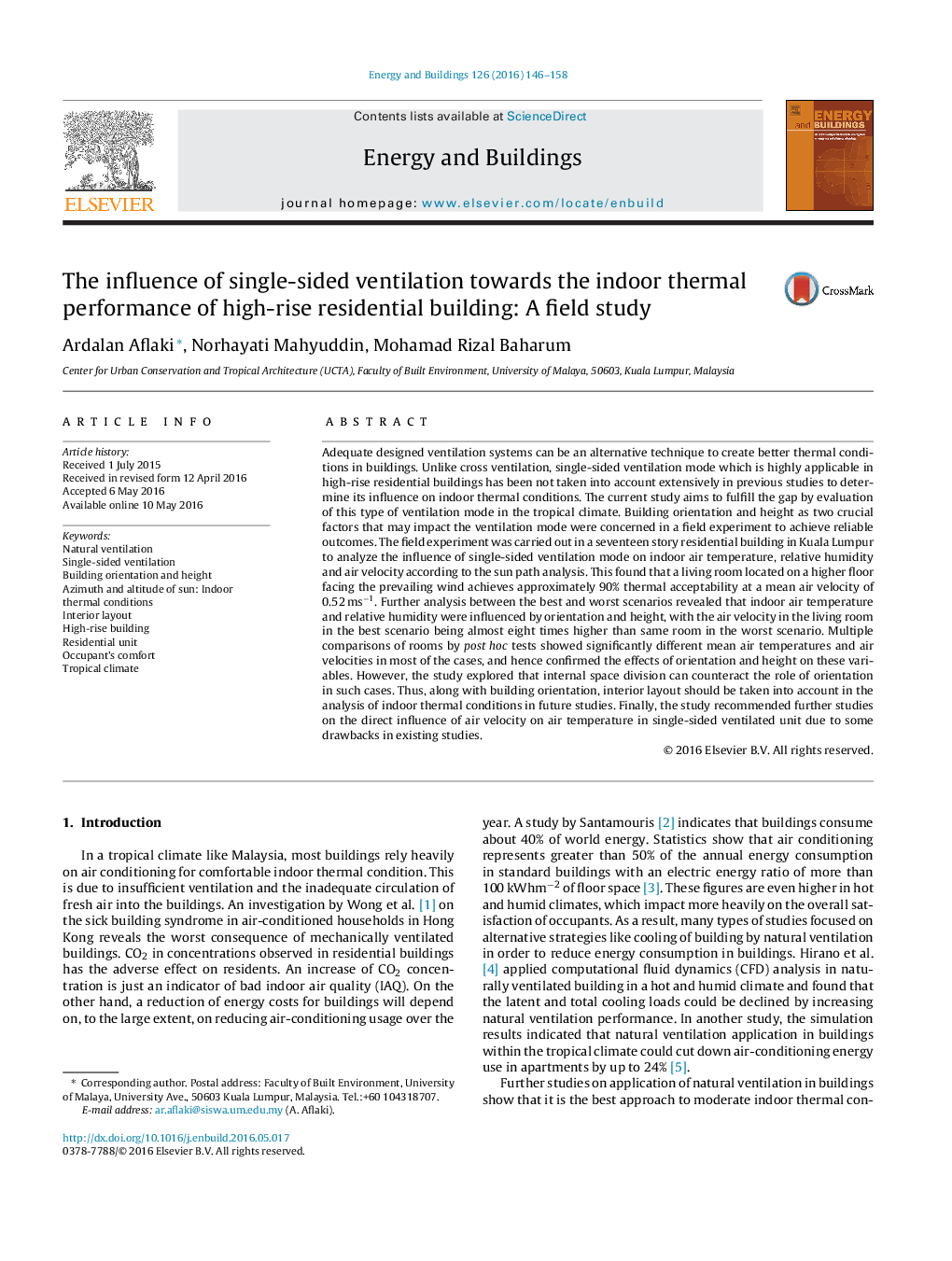| کد مقاله | کد نشریه | سال انتشار | مقاله انگلیسی | نسخه تمام متن |
|---|---|---|---|---|
| 261923 | 504006 | 2016 | 13 صفحه PDF | دانلود رایگان |
• The prevailing wind attains acceptable condition for units on the higher floors.
• The mean temperature in the worst scenario was 2.3 °C higher than in the best.
• The air velocity in the best scenario was eight times greater than the worst.
• Interior layout impacts on the orientation role in indoor thermal case analysis.
• Single-sided ventilation can reduce absorbed heat through solar radiation effectively.
Adequate designed ventilation systems can be an alternative technique to create better thermal conditions in buildings. Unlike cross ventilation, single-sided ventilation mode which is highly applicable in high-rise residential buildings has been not taken into account extensively in previous studies to determine its influence on indoor thermal conditions. The current study aims to fulfill the gap by evaluation of this type of ventilation mode in the tropical climate. Building orientation and height as two crucial factors that may impact the ventilation mode were concerned in a field experiment to achieve reliable outcomes. The field experiment was carried out in a seventeen story residential building in Kuala Lumpur to analyze the influence of single-sided ventilation mode on indoor air temperature, relative humidity and air velocity according to the sun path analysis. This found that a living room located on a higher floor facing the prevailing wind achieves approximately 90% thermal acceptability at a mean air velocity of 0.52 ms−1. Further analysis between the best and worst scenarios revealed that indoor air temperature and relative humidity were influenced by orientation and height, with the air velocity in the living room in the best scenario being almost eight times higher than same room in the worst scenario. Multiple comparisons of rooms by post hoc tests showed significantly different mean air temperatures and air velocities in most of the cases, and hence confirmed the effects of orientation and height on these variables. However, the study explored that internal space division can counteract the role of orientation in such cases. Thus, along with building orientation, interior layout should be taken into account in the analysis of indoor thermal conditions in future studies. Finally, the study recommended further studies on the direct influence of air velocity on air temperature in single-sided ventilated unit due to some drawbacks in existing studies.
Journal: Energy and Buildings - Volume 126, 15 August 2016, Pages 146–158
